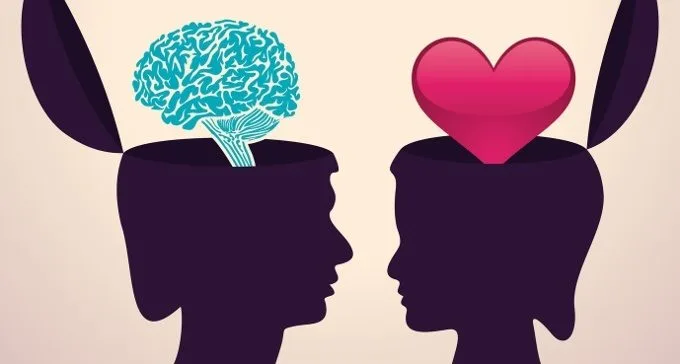Questo articolo ha partecipato al Premio State of Mind 2014 Sezione Junior
Quoziente di empatia e di sistematizzazione: uno studio casistico tra gli studenti di Medicina e Psicologia
Autrice: Ariane Bevacqua (Università degli Studi di Messina)
Abstract
Lo psicologo Simon Baron-Cohen nel suo famoso best-seller “Questione di cervello. La differenza essenziale tra uomini e donne”(2004) intende dimostrare attraverso un’analisi ben documentata, che il cervello femminile è programmato per l’empatia mentre il cervello maschile è programmato per la comprensione ed elaborazione di sistemi. L’autore ci tiene a specificare che queste differenze sono comunque differenze medie perchè può benissimo esistere una donna più votata alla sistematizzazione rispetto a moltissimi uomini come può esistere un uomo più empatico di moltissime donne. In pratica possiamo aspettarci da una donna che sia molto empatica e poco sistematica ma per esserne certi dobbiamo comunque verificare le sue attitudini.(Baron-Cohen,2004). Il test per la valutazione del quoziente di empatia e di sistematizzazione, è stato costruito come strumento per testare la teoria E-S ( Empatizzazione-Sistematizzazione) ( Baron-Cohen et al., 2003; Baron-Cohen & Wheelwright, 2004). È un questionario self-report, costituito da 120 item ( 60 inerenti all’empatia e 60 inerenti alla sistematizzazione) riguardanti esempi che possono verificarsi nella vita quotidiana e che richiedono lo sviluppo di queste abilità. Al soggetto viene richiesto di rispondere a ciascuna affermazione indicando la sua preferenza tra quattro alternative di risposta ( V, aV, aF, F). L’empatia è la capacità di percepire e riconoscere i pensieri e le emozioni degli altri e di reagire con sentimenti e comportamenti adeguati. È caratterizzata da una componente affettiva ( reazione affettiva nei confronti dello stato psichico ed emozionale delle persone con le quali si interagisce), una componente cognitiva ( comprendere e predire reazioni e azioni), una componente mista ( cognitività e affettività interagiscono). Baron-Cohen descrisse tre tipi cerebrali: 1. Il tipo femminile o empatizzante; 2. Il tipo maschile o sistematizzante 3. Il tipo bilanciato. I risultati di queste osservazioni, hanno portato l’autore a pensare che esistano nel cervello “empatie tipo”, più comuni tra le donne, e “sistemi tipo”, più diffusi tra gli uomini. Ma naturalmente le differenze non stanno tutte qui. Tutto ciò può scaturire soprattutto da cause biologiche, più che culturali, e dimostra come ogni tipo di cervello contribuisca in vari modi a formare ciò che noi intendiamo per intelligenza. Sicuramente non tutti gli uomini hanno un cervello tipicamente maschile, così come non tutte le donne ne possiedono uno tipicamente femminile. Esistono donne che hanno migliore capacità di sistematizzazione e sono eccellenti scienziati, ingegneri, architetti, avvocati, e uomini più empatici che si dimostrano ottimi psicologi, insegnanti, terapeuti, esperti in risorse umane. Certo un organo cerebrale assolutamente equilibrato sembra essere molto raro perché alcune ipotesi sostengono che più si diventa sistematici, meno si è empatici e viceversa. Baron-Cohen afferma che le donne nella popolazione generale, in media hanno una più forte unità di empatia, e maschi nella popolazione generale, in media hanno una più forte unità per sistematizzare. Le persone con le condizioni dello spettro autistico hanno una bassa empatia ma hanno un quoziente di sistematizzazione superiore. Secondo Baron-Cohen (2004), l’empatia è l’unità di individuare emozioni e pensieri di un’altra persona e di rispondere ad esse con un emozione del caso. L’empatia permette di sintonizzarsi in maniera naturale e spontanea con qualsiasi pensiero e sentimento altrui. Essere empatici non significa reagire a un numero limitato di emozioni, come il dolore o la tristezza; significa leggere il clima emotivo che si stabilisce tra le persone, mettersi facilmente nei panni degli altri, essere così sensibili da comprendere a fondo il loro stato d’animo e interagire con loro senza ferirli né offenderli. Il soggetto empatico capisce subito se nel suo interlocutore si è verificato un cambiamento di umore, quale potrebbe esserne la causa e che cosa servirebbe a rasserenarlo o incupirlo ulteriormente. Egli reagisce al mutato stato d’animo dell’altro in maniera intuitiva, mostrando sollecitudine, comprensione, solidarietà, incoraggiamento o qualunque sentimento sia adatto alla circostanza. La sistematizzazione è la tendenza ad analizzare, vagliare ed elaborare sistemi. “Chi sistematizza capisce in maniera intuitiva il funzionamento delle cose e deduce le regole fondamentali di un sistema per poter comprendere e predire il suo comportamento o per inventarne uno nuovo”. Come l’empatia è in grado di gestire le centinaia di emozioni umane, la sistematizzazione può gestire un numero enorme di sistemi ma sicuramente, è inadeguata a comprendere il mutare dei sentimenti. Il quoziente empatico (QE) ci permette di rilevare come le persone si sentono, la cura e la sensibilità nei confronti degli altri, mentre il quoziente di sistematizzazione come funzionano le cose o quali sono le regole di base sotto il controllo di un sistema. Per alcuni individui, l’empatia è più forte della sistematizzazione ( cervello di tipo E o cervello femminile), per altri la sistematizzazione è più forte dell’empatia ( cervello di tipo S o cervello maschile) mentre per altri individui entrambi i quozienti sono bilanciati ( cervello bilanciato o cervello di tipo B). Secondo le teorie dell’autore, un’interazione di fattori biologici e culturali spiegherebbe perché le persone di sesso femminile sono in media più empatiche dei maschi e viceversa. Differenze psicologiche tra i sessi possono essere rilevate attraverso la verifica delle regioni cerebrali che presiedono all’empatia e alla sistematizzazione. Tra le regioni che costituirebbero il cervello sociale vi è l’amigdala ( lesioni a quest’area conducono una perdita dell’empatia), la corteccia orbito-frontale e quella mediale frontale, soprattutto nell’emisfero sinistro, il solco temporale superiore. Quando cerchiamo di entrare nella mente di qualcuno per intuire le sue intenzioni e il suo stato d’animo, si illuminano, cioè presentano un maggior flusso sanguigno le connessioni che vanno dal solco temporale superiore all’amigdala. Altra struttura encefalica importante è il corpo calloso in quanto da alcune indagini risulta che nelle donne la sua sezione posteriore sia più ampia. Il presente lavoro intende valutare il Quoziente di Empatia e di Sistematizzazione descritto da Baron-Cohen, in un campione di studenti universitari di Psicologia e di Medicina dell’università di Messina, con l’obiettivo di valutare queste dimensioni dal punto di vista descrittivo e correlazionale.
English abstract
Psychologist Simon Baron-Cohen in his famous best-seller “A matter of the brain. The essential difference between men and women “(2004) will demonstrate through an analysis of well-documented that the female brain is programmed for empathy, while the male brain is programmed to the understanding and development of systems. The author is at pains to specify that these differences are, however, mean differences may well exist because a woman devoted to systematization than many men as there may be a more empathetic man of many women. In practice we can expect from a woman who is very empathetic and unsystematic but to be sure we still have to test his abilities. (Baron-Cohen, 2004). The test for the assessment of empathy and systemizing quotient, was built as a tool to test the theory ES (Empatizzazione-Systematic) (Baron-Cohen et al., 2003, Baron-Cohen & Wheelwright, 2004). It is a self-report questionnaire consisting of 120 items (60 and 60 relating to empathy inherent in the systematization) on examples that can occur in everyday life and which require the development of these skills. The subject is asked to respond to each statement by indicating his preference among four possible answers (V, aV, aF, F). Empathy is the ability to perceive and recognize the thoughts and emotions of others and to respond with feelings and behaviors. It is characterized by an affective component (affective reaction against the mental and emotional state of the people with whom you are interacting), a cognitive component (understand and predict reactions and actions), a component of mixed (cognition and emotions interact). Baron-Cohen described three types brain: 1 The type or female empatizzante; 2 The type male or systematizing 3 The balanced type. The results of these observations have led the author to think that there are in the brain “empathy type”, the most common among women, and “type systems”, the most popular among men. But of course the differences are not all here. All this can result mainly from a biological, rather than cultural, and shows how each type of brain contributes in various ways to form what we mean by intelligence. Certainly not all men have a typically male brain, just as not all women own one typically female. There are women who have better ability to systematize and are excellent scientists, engineers, architects, attorneys, and more empathetic men who show excellent psychologists, teachers, therapists, experts in human resources. Certainly a very balanced cerebral organ seems to be very rare because some hypotheses argue that you become more systematic, less is empathetic and vice versa. Baron-Cohen says that women in the general population on average have a stronger drive to empathize, and males in the general population on average have a stronger drive to systemize. People with autism spectrum conditions have low empathy but have a higher quotient of systematization. According to Baron-Cohen (2004), empathy is the drive to identify another person’s emotions and thoughts, and to respond to them with an appropriate emotion. Empathy allows you to tune in a natural and spontaneous with whatever thoughts and feelings of others. Being empathetic does not mean to respond to a limited number of emotions such as grief or sadness; means reading the emotional climate that is established between people, easy to get in the shoes of others, be sensitive enough to fully understand their state of mind and interact with them without offending them or hurt them. The subject of empathy in his interlocutor understands immediately if there is a change in mood, which may be the cause and what would serve to cheer him or incupirlo further. He reacts to the changing mood of the other in an intuitive manner by showing concern, understanding, solidarity, encouragement or whatever feelings is suitable for your circumstances. The systematization is the tendency to analyze, examine and process systems. “Who systematizes understand intuitively how things work and figure out the basic rules of a system in order to understand and predict its behavior or to invent a new one.” How empathy is able to handle hundreds of human emotions, the systematization can handle a huge number of systems but surely, is inadequate to understand the changing feelings. The empathy quotient (EQ) allows us to detect how people feel, care and sensitivity towards others, while the quotient of systematization how things work or what are the basic rules under the control of a system. For some individuals, empathy is stronger than the systematization (brain type E or female brain), for others the systematization is stronger than empathy (the brain of type S or male brain), while for other individuals both ratios are balanced (brain or balanced brain type B). According to the theories of the author, an interaction of biological and cultural factors explain why female persons are on average more empathic than males and vice versa. Psychological differences between the sexes can be detected by testing the brain regions that govern empathy and systematization. Among the regions that constitute the social brain is the amygdala (lesions in this area lead to a loss of empathy), the orbitofrontal cortex and the medial frontal, especially in the left hemisphere, the superior temporal sulcus. When we try to get into the mind of someone to guess his intentions and his mood, light, ie, have an increased blood flow connections ranging from the superior temporal sulcus to the amygdala. Another important brain structure is the corpus callosum as from some surveys show that women in its rear section is larger. The present work intends to evaluate the Empathy Quotient and Systematization described by Baron-Cohen, in a sample of university students of Psychology and Medicine. With the aim to assess these dimensions in terms of descriptive and correlational.







